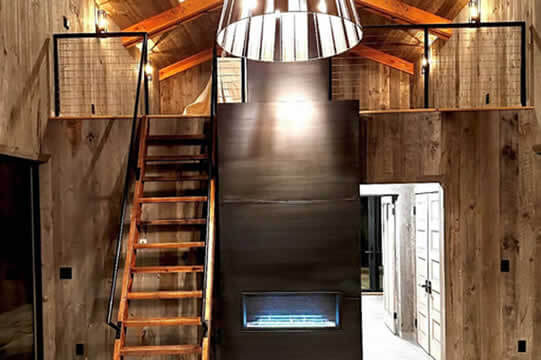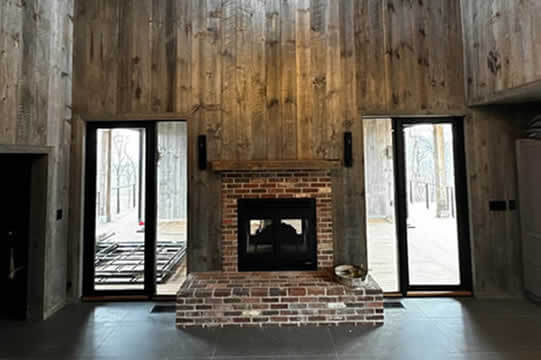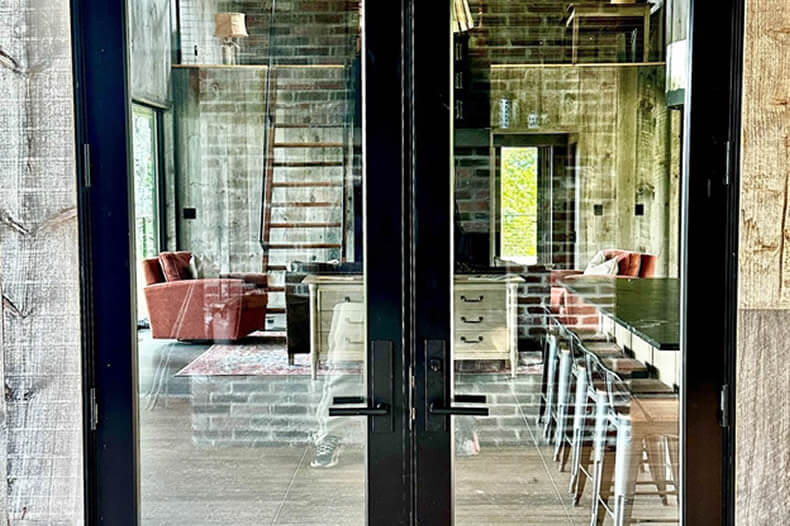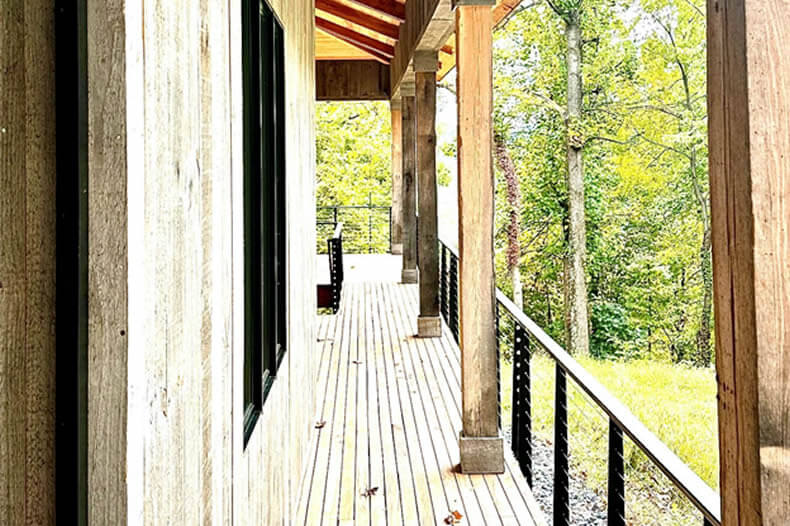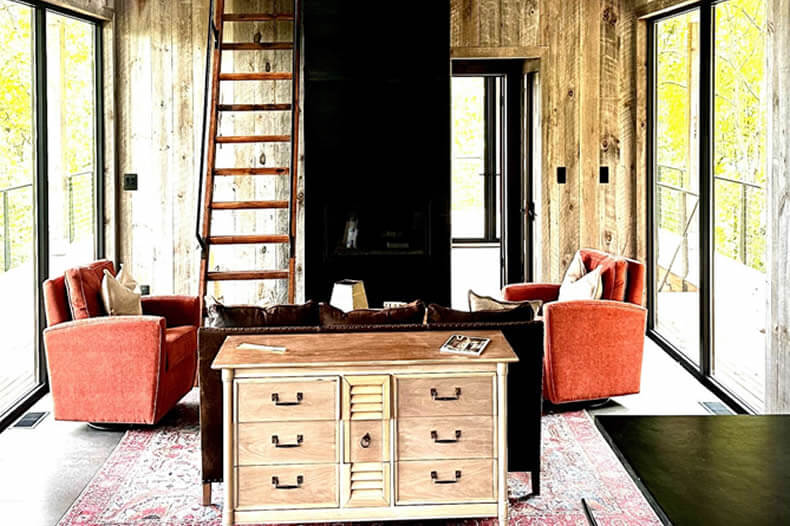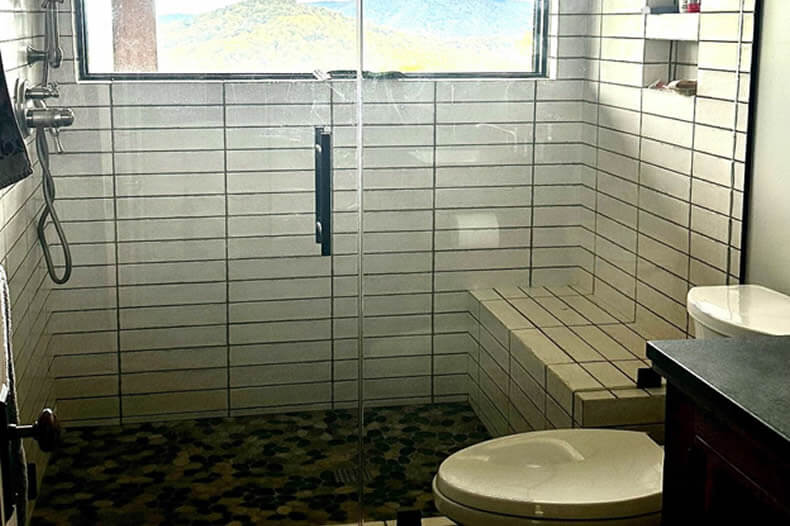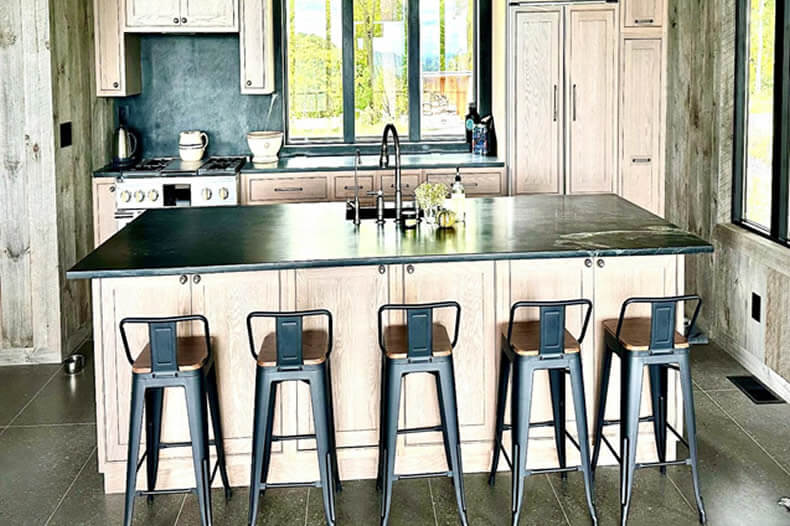Preserving Tradition: The Modern Resurgence of the Dogtrot House
In the vast tapestry of American architectural history, few styles evoke the nostalgic charm and rustic allure of the dogtrot house. Immortalized in literature, paintings, and photographs, this quintessential Southern dwelling embodies the essence of a bygone era, where the rhythms of rural life echoed through its open breezeways and expansive interiors.
Rooted in the vernacular architecture of the early twentieth century, the dogtrot house has long been celebrated as a symbol of Southern heritage. Renowned authors like William Faulkner, in works such as “Absalom! Absalom!” and “As I Lay Dying,” imbued these humble abodes with profound social commentary, reflecting the complexities of Southern society. Similarly, Eudora Welty, through her lens as a photographer for the Farm Security Administration, captured the essence of the dogtrot house during the tumultuous 1930s.
Fast forward to the present day, where the spirit of the dogtrot finds new life in a recent project aptly named “The Dogtrot.” Conceived as a modern interpretation of this iconic architectural form, our team embarked on a journey to blend tradition with innovation, paying homage to the past while embracing the demands of contemporary living.
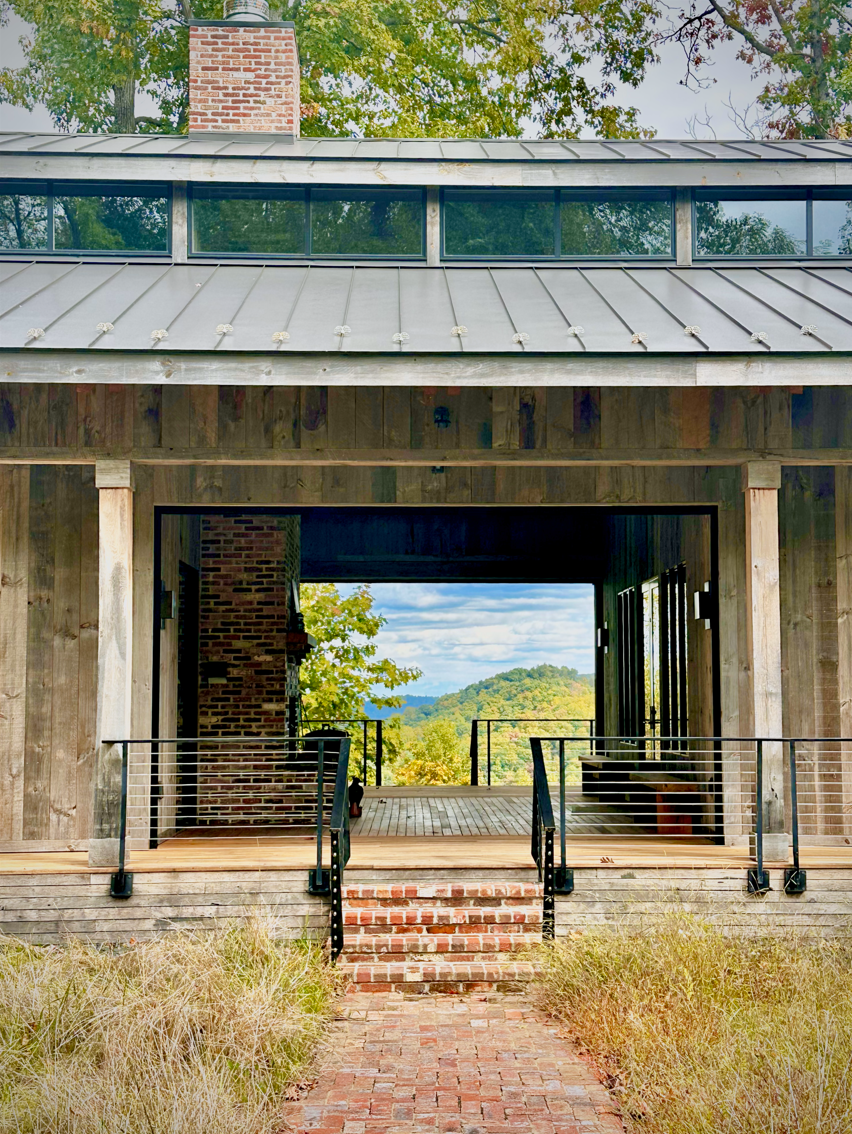

When our client approached us with the vision of creating a cabin that reimagined the dogtrot concept, we recognized the opportunity to craft something truly exceptional. The design called
for a main cabin on one side, flanked by a two-bedroom guest cottage on the other, with a central dogtrot serving as both a functional breezeway and a symbolic link between past and present.
Central to the design concept was the incorporation of a clerestory that traversed all three spaces, suffusing the interiors with a soft, diffused light that seamlessly connected the disparate elements of the structure. Situated atop a mountain, the site offered breathtaking views that we sought to capture from every vantage point within the home.
However, realizing this vision meant confronting challenges, chief among them the need to navigate the delicate balance between progress and preservation. To make room for the footprint of the structure, several specimen oak trees had to be removed—a decision not taken lightly. Yet, in a testament to our commitment to sustainability and local craftsmanship, these trees were meticulously milled, kiln-dried, and repurposed as porch columns and decking, infusing the home with a sense of history and heritage.


Further echoing the ethos of sustainability, the project embraced the use of locally sourced and reclaimed materials wherever possible. From the reclaimed brick cladding the two-sided wood- burning fireplace, sourced from Richmond, Virginia, to the sleek modern gas fireplace clad in mill-finish steel, every element of the design spoke to a reverence for the past and a commitment to the future.
In the heart of the home, locally sourced soapstone countertops from the Alberene quarry in Schuyler served as both a functional
surface and a tactile reminder of the region’s natural beauty—a fitting homage to the rich geological heritage of the area.
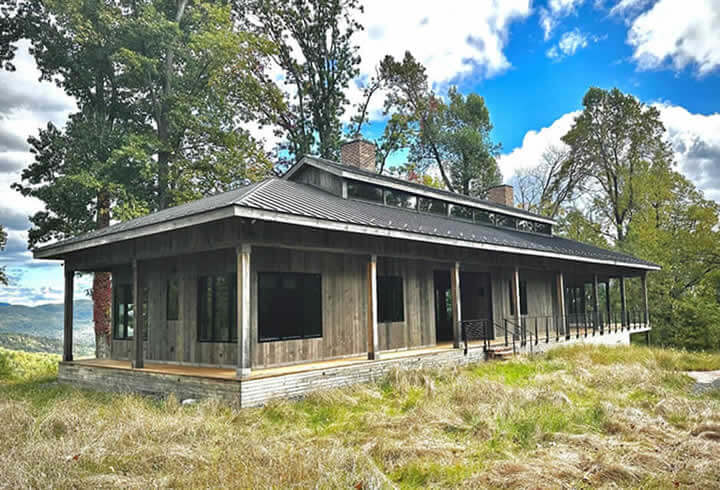
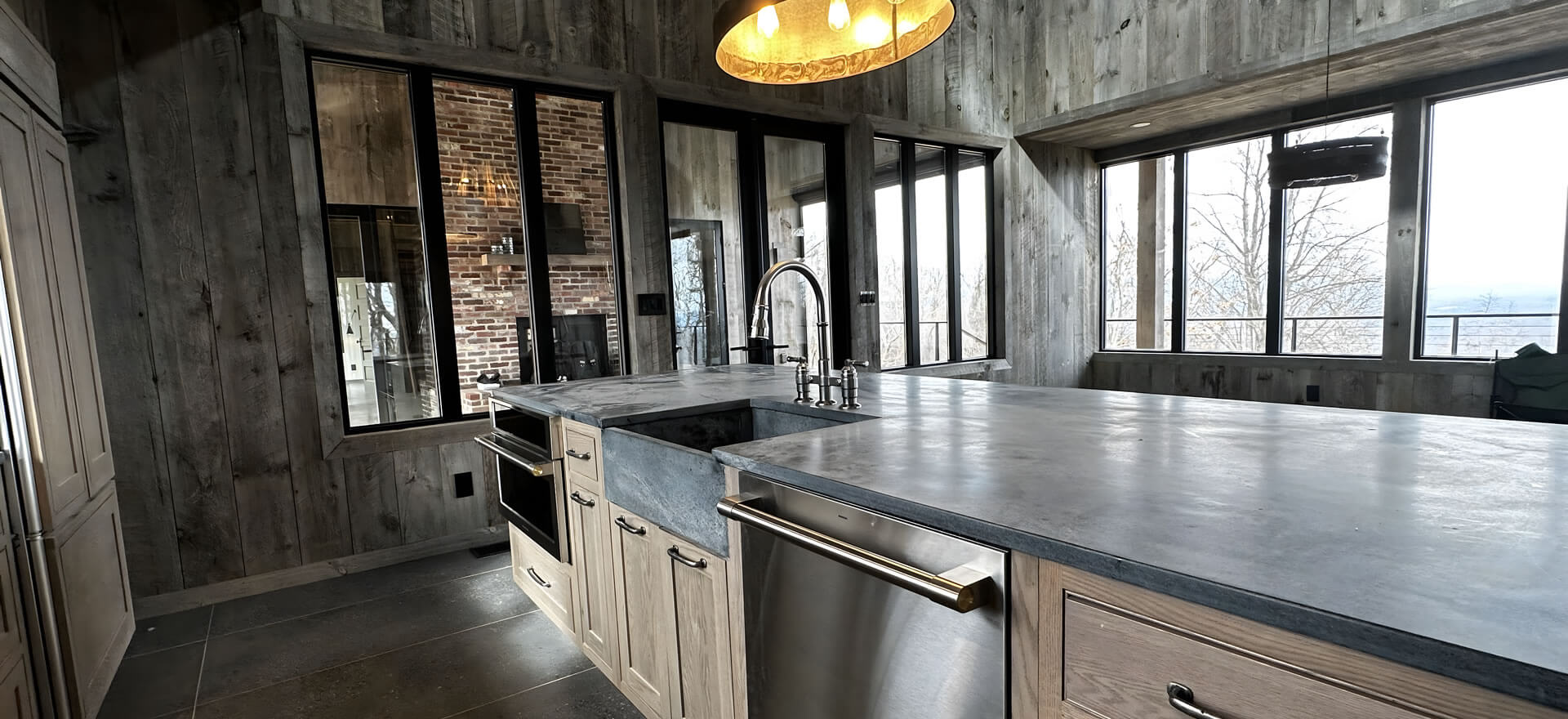
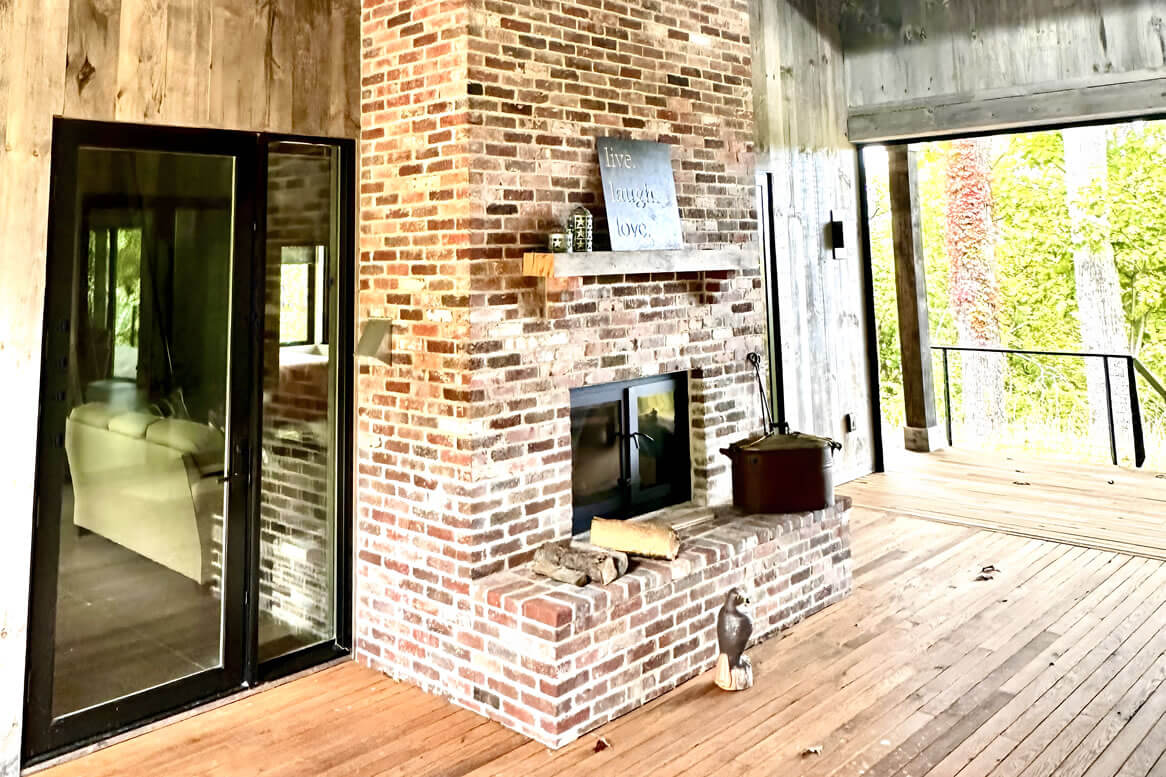
In “The Dogtrot,” tradition and modernity converge in a harmonious synthesis, breathing new life into an age-old architectural typology. As we reflect on this project, we are reminded of the enduring power of design to transcend time and place, weaving together threads of history, culture, and innovation to create spaces that resonate with the soul. In honoring the legacy of the dogtrot house, we pay homage not only to the past but also to the spirit of resilience and ingenuity that defines the American architectural landscape.
